If you’re experiencing pain in your knee and are wondering how to relieve knee pain, then this article is exactly what you need.
Not only will I go through the symptoms, but also help you understand how to get it diagnosed and all the eight different methods you have to relieve knee pain effectively.
If that sounds like what you need, then let’s get started!
What is Knee Pain?
Knee pain is that aching pain that we sometimes experience in our knees as general complaint common among people of pretty much all ages though it does tend to increase as we age. OR it’s a sharp shooting pain.
It can happen on the inside, outside, under or below the knee cap.
This type of pain can come on suddenly, especially when followed by a specific moment injury or just a common exercise routine. Sometimes it can start out mild and then gradually start to worsen.
There are many causes of knee pain such as bursitis, osteoarthritis, meniscus tear, etc. I’ve written a detailed guide listing the 7 common causes of knee pain, but in this article, we’ll discuss the ways you can relieve it in more depth.
In other words, knee pain can mean A LOT of different things. So it’s really important to know what you’re dealing with to help find the best way to resolve it.
**HINT: rest and ice usually aren’t going to cut it!!
What are the Symptoms of Knee Pain?
There are many common causes of knee pain, so the severity and exact location can vary depending on the exact cause. However, here are some of the most common signs and symptoms:
- Swelling
- Stiffness
- Redness and sensation of warmth to touch
- Weakness in the knee
- Instability in the knee
- Knee pops or clicks
- Inability to straighten the knee (this was what lead to my 2017 surgery)
When to See a Doctor?
Many times, the knee can gradually get better with simple remedies at home, but there are instances when a medical practitioner needs to get involved. So, call your call if you experience any of the following:
- Inability to bear weight or your knee locks
- Feeling as if your knee is unstable or giving out
- Swelling in the knee
- Inability to straighten or flex your knee
- Experiencing fever along with redness, swelling, and pain in the knee
- Severe pain after an injury
- Any obvious deformity in the knee or leg
Diagnosing Knee Pain
If you’ve called your doctor, then it’s time for a diagnosis. Your doctor will do a physical exam to inspect your knee for the symptoms you’re experiencing.
He or she will also move your legs to check how far you can move in different directions and push on or pull the joint to evaluate the integrity of the structure of your knee.
After that, they might suggest tests such as an X-ray, CT scan, ultrasound, or MRI depending on what they suspect will work the best. For example, MRI is particularly useful in diagnosing injuries of the soft tissues, such as the cartilage, tendons, ligaments, and muscles.
If your doctor suspects an infection or inflammation, you’ll likely be given blood tests and, in some cases, arthrocentesis.
This test is done by removing a small amount of fluid from within your knee joint with a needle and sending it to a laboratory for analysis.
Does Icing and Rest Help Relieve Knee Pain?
You might have heard of the common method of RICE (rest, ice, compression, and elevation). But you might not want to pop out that ice pack or frozen bag of peas.
Turns out ice and rest aren’t all they’re cracked up to be.
Initially, they might help, but in many cases like your IT Band, resting actually leads to stiffer, tighter muscles and a runner wound so tight someone else is bound to get injured.
I’ve had nearly a 10-year streak of little to no major injuries, so when my knee started to act up I assumed it was yet another little niggle that would go away.
I employed all the things I knew:
- Foam Rolling
- Physical Therapy moves to strengthen those hips
- Chiropractic care to get the hips aligned
- Deep tissue massage to work out any kinks that might be throwing off mechanics
No change. I still couldn’t extend my leg.
Once we reached the discussion of surgery, I was open to it but listened to the doctor’s advice to try other things first.
If we weren’t diving right in to cut me open, then I was diving right into all the other ideas that might seem, wild, whacky, or just not as well known.
NOTE: These ideas work for any area, I’m just focusing on personal experience with the knee.
How to Relieve Knee Pain
Now that we’ve covered the basics of knee pain and how to correctly get diagnosed, let’s look at all the methods we have to relieve knee pain effectively.
I’m going to go through some of the more common options and then give you some more uncommon one’s as well. Because if you’re anything like me, I was ready to exhaust all options to get back to running!
1. Over-the-Counter Medications
Let’s start with the most basic method of relieving knee pain, especially if the injury is not acute.
Your doctor may recommend taking over-the-counter medications such as ibuprofen (Advil, Motrin, etc.), naproxen sodium (Aleve), or acetaminophen (Tylenol).
These can help reduce inflammation and swelling in cases that aren’t severe and are usually used for the short term.
Although they are over-the-counter medications, you should consult with your doctor before taking them, and they should not be taken for extended periods of time.
REMINDER: Taking a pain reliever so you can run is not advised. Then you’re just masking the symptoms.
2. Kinesiology Taping
This was such a win for me. Learning how to truly tape my knee in different ways to create support.
I’ve used it prior to that 2017 surgery to help support the knee, used it to reduce swelling after and have used it to help treat jumpers knee.
I prefer it to a brace because it still allows your body to move through the full range of motion and forces us to keep working on all the muscle stability. Kinesiology tape is designed to reduce the load on the underlying tissue.
There are a million different ways to tape that I can’t go in to here, but worth asking your PT or do a quick YouTube search around your type of injury.
3. Platelet Rich Plasma (PRP)
PRP injections are an upcoming way that appears to reduce inflammation and promote healing.
So what exactly are PRP injections? A small sample of your blood is placed in a centrifuge to separate the platelets from the other blood components, then the concentrated PRP is injected.
Since platelets help to induce recovery, these injections are designed to increase that concentration for rapid healing.
It’s incredibly important to understand that it can take weeks to decide if this is working for you and how long-lasting the effects are seems to vary.
I think for some people it’s enough to get the healing started so their body can take over, for others it becomes an ongoing treatment if they find relief.
The shot is done into the joint, and prior to injecting the platelets, a numbing shot is given which is the only painful part. It’s no worse than getting any other shot.
Once the PRP is injected there’s an odd feeling of fullness and for me that traveled immediately to my calf, which was weird but not painful in any way.
In many cases, they use an ultrasound machine to guide the needle into a specific spot. We ended up not needing to do that, as she just went for the joint. The process itself was about an hour because we talked in depth before they drew blood.
Personally, I didn’t see any improvement in my ability to straighten my knee. But this method is said to provide some long-term benefits for arthritis. Further research is required to fully understand the benefits in terms of different injuries and knee conditions.
Recovery from PRP Injection
A lot of you have asked what to expect, so here is my experience.
Day 1-2
You aren’t allowed to take any kind of anti-inflammatory, as the goal here is to elicit the inflammatory response for healing. So I followed orders not to exercise and as my entire knee area felt very swollen that was pretty easy…I wasn’t interested in being in pain.
Day 3-5
I started using the stationary bike daily to keep myself active and I had no problems doing my strength training. Walking however was an entirely different matter. After a few steps at a ailing grandmotherly pace a knot would form in the top of my calf and it felt like the back of my knee would burst out.
So discomfort is the best word for it, not pain, other than a pain in the butt because I couldn’t even walk through the grocery store.
Day 6-11
Pretty much the same, biking all good, walking not great, but the discomfort started to fade.
Day 12-16:
I’ve been able to run a few miles after taping my knee back up and walking is feeling a little better. I’m still moving slow, but I can do a mile now before feeling like ugh the back of my knee is swollen.
Day 17-21:
Back to using the kinesio tape and being able to run a few miles, plus walk a little bit faster and tiny bit farther. Again, compared to my normal 4.0mph 30 minute after walks, I’m still feeling like a slow poke. A good 3.2mph for a couple miles is enough to make things feel swollen.
I’ve also found I still can’t use my standing desk for long periods.
Final Result
No additional ability to straighten my knee and we don’t believe this is going to help make that work. However, it will still provide some long term benefits for the arthritis.
I don’t know that I can help many of you decide if it’s beneficial, but I hope from this you can see that it’s not painful in the sharp kind of way, but more like that discomfort after a hard marathon that keeps you from doing much.
This also showed me right away, that I was indeed getting more benefits than I realized from my anti-inflammatory routine! I restarted it on day 14 and started to notice a difference right away, even in my skin which was angry from letting all that inflammation run rampant, immediately began clearing up!
4. Dry Needling
I’ve had this done in the past and found great results from Dr. Lorenzo getting my glutes to release, giving new meaning to the idea of being a tight ass, clearly I carry some emotions there.
Anyhow, this time around I went to Elevate Physical Therapy and after messing with a lot of things, we decided to see if dry needling would allow my calf muscle to release and provide any additional knee extension.
So what is dry needling anyway?
Dry needling uses fine filament needles on muscular trigger points to create muscle contractions or to create a muscle release through a process of “resetting”.
By honing in on these spots (yup those same tender ones you find foam rolling) you can often ease localized and referred pain, tenderness, sensitivity, and motor dysfunction.
Trigger points can develop from injury, disease processes, and repetitive stress as occurs in sports or with postural strain.
Is it just acupuncture? Nope.
Acupuncture is designed to restore the flow of energy in the body through pathways called meridians and is usually totally painless. Big fan!
Meanwhile, in dry needling, the needles are inserted into those tender muscle tissue spots which create a sensation of cramping or twitching.
Depending on the area it might be mildly uncomfortable for just a moment, to a “holy mother of… why are you trying to kill me” again for just a moment. Then if it’s worked, you tend to feel a great release in the muscle.
Electroacupuncture is another part of needling. They’ll attach a slight pulse to the needle, which will make your muscle jump and helps to really wake up a muscle that might be shut down.
5. Myokenistetics
If you aren’t sure what that word even is, no worries! I had to have Ashley at H2U Plus say it for me a few times and then we both agreed MYK is a better name.
This isn’t something you will find many practitioners for yet, but I’m quite positive it will grow and for those in Denver, you must go chat with her!
But what is it? Your nerve connects to specific muscles, touching and awakening them can callow that nerve to begin sending signals properly.
It’s a process that you almost need to experience to fully understand because the light touch seems too good to be true for those of us used to things like deep tissue work with foam rollers!
Focusing on posture, Ashley looked at where my feet rotated, how my shoulders were aligned and all those posture pieces that we know are so important for good running form.
After that, she honed in on the specific nerves that needed to be tapped to create change. The goal is to get to the ROOT cause, rather than the symptom.
For example, my rotated hip was fixed through 20 minutes of:
- Some light tapping on points throughout the body to either awaken or turn off nerves
- No chiro
- No deep tissue painful sports massage
- No need to undress
- You just lay there!
It’s genuinely a fascinating thing to see how these light movements could make a difference and for those in pain, what a great option!
You don’t need the intense dig of Graston, just these light touches to change the way your nerves are communicating.
6. Active Release Therapy
Active Release Techniques (ART) are a soft tissue technique that focuses on relieving tissue tension by removing fibrosis or adhesions that can form in tissues as a result of overload from repetitive use.
I have used ART way in the past and didn’t feel it was effective for me, but I have friends who swear by it! I think that my chiropractor does a great job of deep muscle tissue work which seems to work best for me.
For those who don’t know ART, here’s a more detailed explanation of what it is:
“ART is a patented, state-of-the-art soft tissue system/movement-based massage technique that treats problems with muscles, tendons, ligaments, fascia, and nerves. Headaches, back pain, carpal tunnel syndrome, shin splints, shoulder pain, sciatica, plantar fasciitis, knee problems, and tennis elbow are just a few of the many conditions that can be resolved quickly and permanently with ART. These conditions all have one important thing in common: they are often a result of overused muscles.”
It’s kind of like a deep tissue sports massage with stretching.
7. Corticosteroid Injection
Corticosteroid injections, also known as cortisone shots, are injections that can help relieve pain and inflammation in specific areas of the body, including the knee.
These injections usually contain two different medications, namely a corticosteroid medication and a local anesthetic.
A corticosteroid drug injected into your knee joint may help reduce the pain and symptoms of a flare-up of arthritis or relieve inflammation from other knee injuries.
This pain relief may last for a few months, but it’s important to note that these injections are not always effective and do come with certain risks.
I’ve written all about these injections in detail in my cortisone shots in the knee guide.
8. Hyaluronic Acid
Hyaluronic acid injections are used to treat knee pain caused by osteoarthritis in people who have already tried painkillers like acetaminophen and other treatments that didn’t work well.
This thick fluid can be injected into your knee to increase mobility and reduce pain. It’s similar to the fluid that naturally lubricates joints.
Even though research on the efficacy of this treatment has produced mixed results, one or several shots may provide relief that lasts for up to six months.
According to research, hyaluronic acid injections may provide anti-inflammatory benefits such as decreased knee pain, inflammation, and/or swelling.
In some individuals, the viscosity of hyaluronic acid may improve knee joint lubrication and shock absorption. Because of these effects, friction within the joint may be reduced, which in turn may alleviate pain and stiffness and stop the breakdown of cartilage and bone.
Some people experience less pain because molecules of hyaluronic acid surround nerve endings and act as a barrier, which prevents pain signals from being sent to the brain.
9. Other Non-Surgery Options
Here are a few other things I’ve discussed previously that might be interesting for injury relief.
- Cryotherapy
- Electrostimulation
- Magnesium for Muscle Cramps and Recovery
- Ice Bath and Epsom Salts
- Using Kinesio Tape for support
- Anti-inflammatory Eating(HUGE!!)
- CBD Oil(I wish I’d tried this one sooner, game changer!)
10. Surgery Options
Your doctor may have mentioned that you may need surgery for your injury to relieve knee pain. In such situations, it’s usually not necessary to have the operation right away.
Consider the pros and cons of the surgery that’s recommended to fully understand how it will affect you and the level of pain relief in the knee it will provide.
There are a few different surgery options available, depending on the type of injury you have. Let’s look at each of them:
Arthroscopic Surgery
Depending on the severity of your injury, your doctor might be able to examine and fix the damage to your joints by inserting a fiber-optic camera and long, narrow tools through a few tiny incisions near your knee.
Arthroscopy can be used to repair torn ligaments, remove loose objects from your knee joint, and remove or replace damaged cartilage especially if it is the cause of your knee locking.
Partial Knee Replacement Surgery
In this procedure, your surgeon uses metal and plastic components to replace only the most severely damaged area of your knee.
Since the procedure is typically performed through a few small incisions, your recovery time will probably be shorter than if your entire knee were to be replaced during surgery.
Total Knee Replacement Surgery
During this operation, your surgeon will remove damaged bone and cartilage from your thighbone, shinbone, and kneecap, and then replace it with an artificial joint made of metal alloys, high-grade plastics, and polymers.
The downtime for this type of surgery is longer than any of the other procedures listed in this article.
Looking for more knee help?
Other ways to connect with Amanda
Instagram: RunToTheFinish
Facebook: RunToTheFinish
Sign Up to Receive a Weekly Newsletter with Top Running Tips
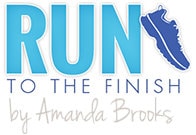
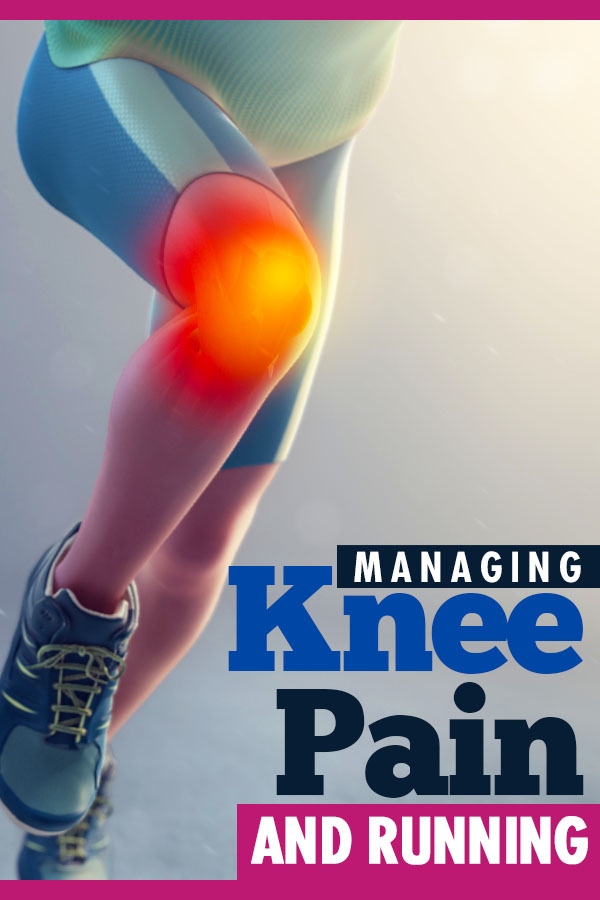
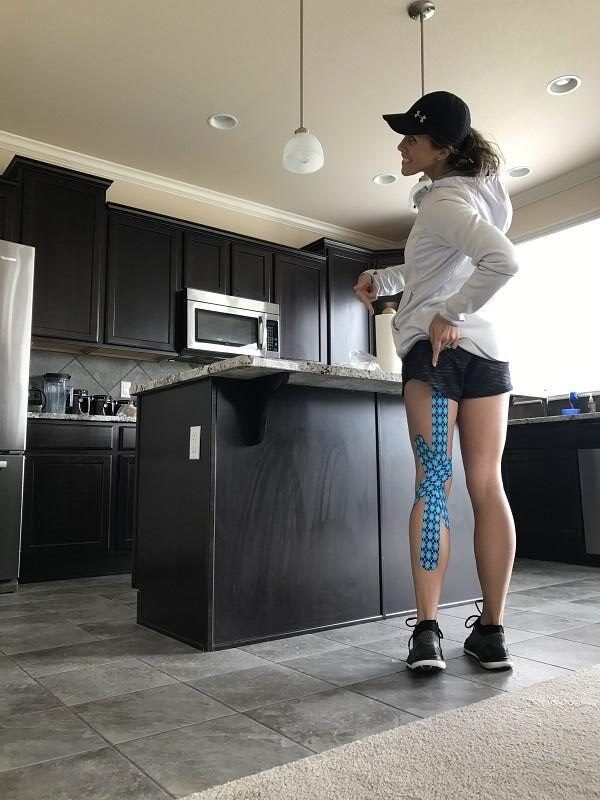
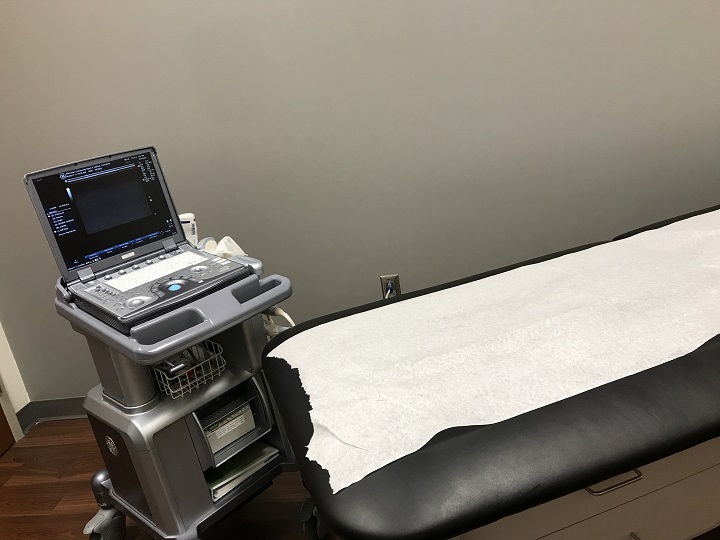
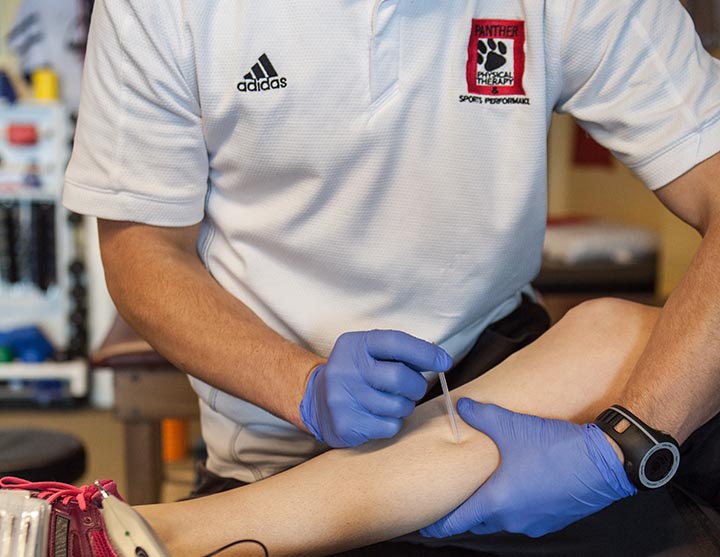
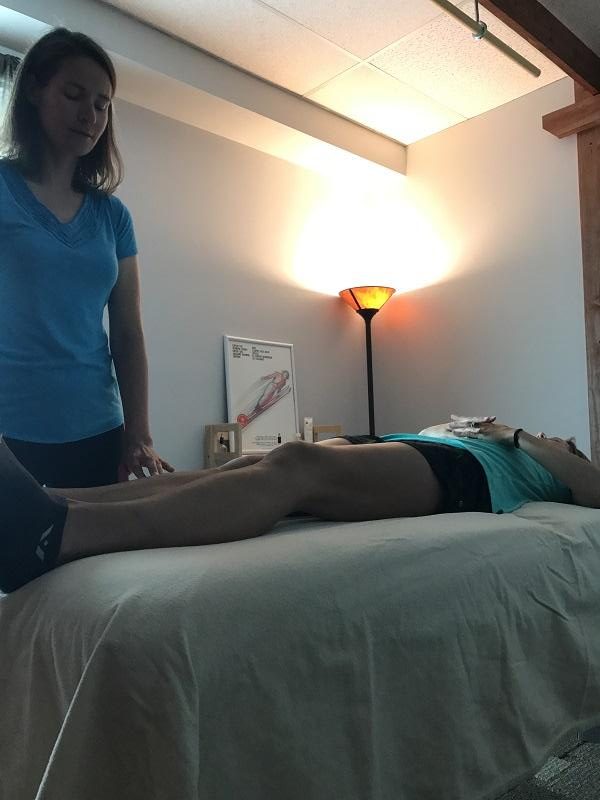

 10 Running Goals That Go Beyond the Clock
10 Running Goals That Go Beyond the Clock
Emily
Hmmmm….. Prolonged pain is really something that often gets me to go to a doctor; I think I’m a little too stubborn about it sometimes.
You’ve really found some unique ways for pain relief, and it sounds like they are actually really helping.
Jordan
Such a bummer that your knee is giving you trouble. I’m lucky to have never (knock on wood) suffered from a similar issue. I would definitely want to try all other alternatives prior to surgery!
Jenn
I always have hip issues when I was running a lot. I swear by my chiropractor to help me, but I’m interested in that dry needling too. Very interesting!
Lorie
Dry needling is what a lot of my friends swear by. When you are used to loving, it’s so frustrating to work through it sometimes!
Jessica @Nutritioulicious
Such a great post Amanda! I loved hearing about all of the different alternatives out there!
Taylor Kiser
Wow, there are so many different options available for injury relief! I can’t even imagine getting my hopes up with each one hoping that THIS will finally be the one to bring relief to an injury. Hope you’ve found what works to bring relief to your knee!
Sonali- The Foodie Physician
I learned a lot reading this post! In the ER we see a lot of knee injuries but never follow up with patients afterwards. It’s nice to know that there are many nonsurgical options out there.
Sarah
Thanks for all the info! Rest and ice doesn’t always work, tape is a best friend but also doesn’t always work. I’m hoping you feel better soon but thank you for giving me more info and things to try.
Alisa Fleming
I’m heading back into the orthopedic surgeon soon, and probably an MRI, so I’ll be coming back to check this out soon! Very helpful.
amanda
oh no, I’m sorry to hear that!
Julie @ Running in a Skirt
I’m so sorry you’ve been having so much knee trouble! These are really great ways to get some relief.
For general health issues I’m pretty quick to go to the doc because of my medical history but for running stuff I put it off… and offf…….
Kristina @ Love & Zest
There is some good info in this! People with knee problems are going to love that you shared this!
Robert Fuller
Knee pan is most terrible thing that can happen to anyone and I wish it should not happen to any one. Getting rid of it is as soon as possible is very necessary. I really appreciate that you shared this techniques with us, it will going to help many those who have same problem. Thanks.
Physio Shaun
Great article thanks. Interesting point re the foam rolling for IT band pain – I get a lot of patients that have been told to roll out their IT bands but a lot of new research has shown that this has no effect at all and is just painful without any gains!
Here’s a quick link explaining it: http://wp.me/p3GGf6-A9
Ray
What an awesome article – I always recommend trying alternative therapies over surgery but this is an incredible list with invaluable information. Thank you so much. I’ll be sure to share it.
Helen Stewart
do you think a chiropractor is the best person to deal with leg pain? Just saying since i’ve always consulted a chiro whenever i have such issues and it worked out well
amanda
I definitely started with my chiro who does an amazing job of working with muscles. I think that’s valuable for most runners.